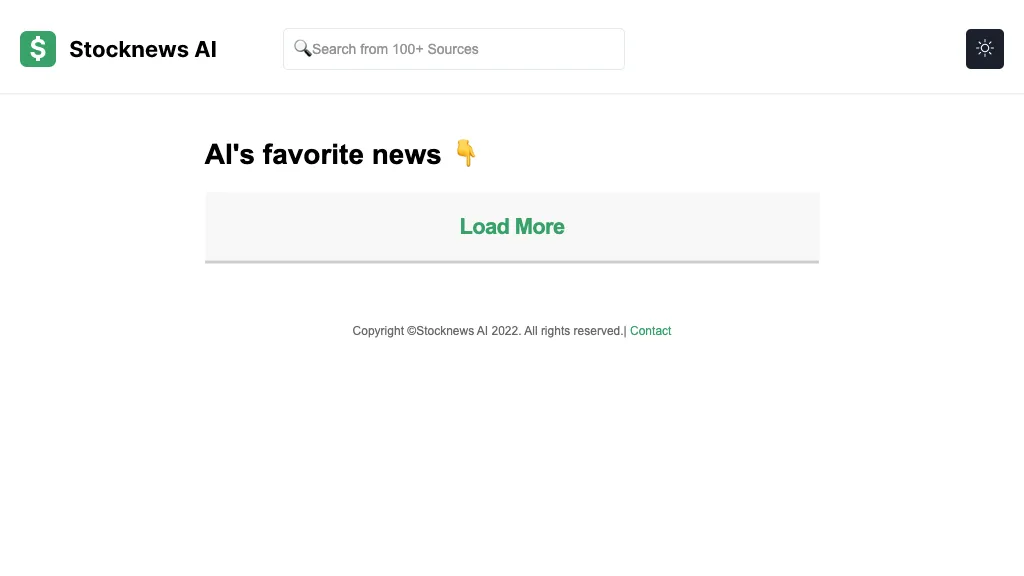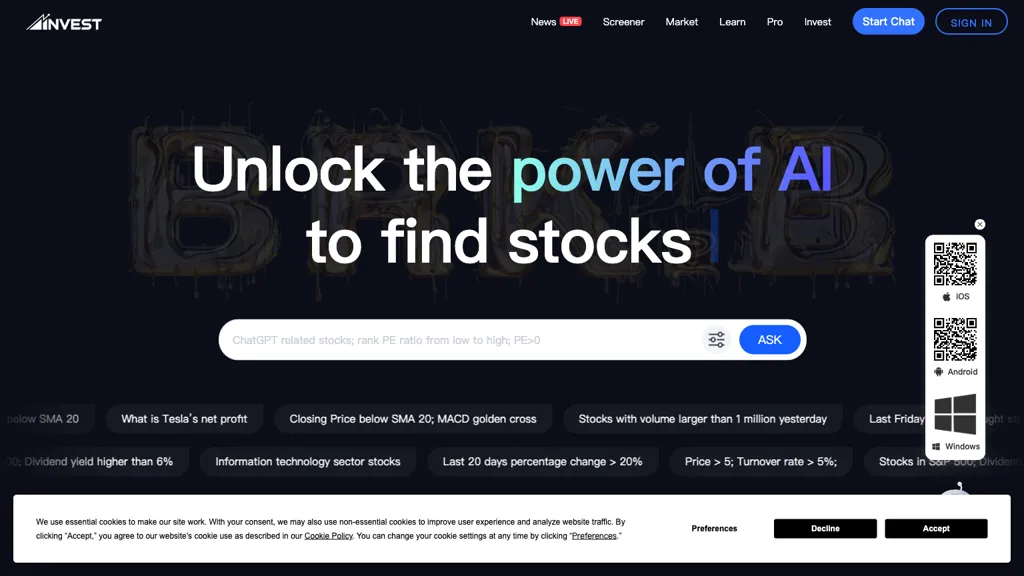20 Free Reasons For Choosing AI Stock Investing Platform Websites
20 Free Reasons For Choosing AI Stock Investing Platform Websites
Blog Article
Top 10 Tips To Evaluate The Strategy Customization Of Ai Stock Predicting/Analyzing Trading Platforms
Strategy customization is a crucial feature of AI platform for predicting and analyzing stocks, as it allows users to customize the platform according to their own specific goals in trading and risk tolerance as well as market conditions. A platform with robust customization options can significantly improve the efficiency of your trading. Here are the 10 best suggestions for evaluating the customization options of these platforms.
1. Evaluate Pre-Built Strategy Templates
Variety of templates: Determine if the platform provides various built-in trading strategies (e.g. day trading and swing investing, as well as long-term investments).
The user's experience is a good indication.
Performance history: Check whether the platform has historical performance data for pre-built strategies.
2. Assessment Custom Strategy
Drag-and-drop tools: Choose platforms that have drag-and-drop interfaces that let you easily develop customized strategies.
Coding Options: If you are a professional user, be sure that the platform can support the creation of custom codes.
Flexibility - Make sure that the platform you select allows you to establish rules for the entry and exit of your business, as well as parameters to manage risk, as well as other essential components of your strategic plan.
3. Check for Backtesting Capabilities
Historical data: Verify that the platform has sufficient historical data for back-testing strategies.
Customizable parameters: Ensure you can adjust parameters (e.g., timeframes, indicators) when backtesting.
Performance metrics - Make sure to see if your platform provides detailed performance indicators (e.g. the winning rate, Sharpe coefficient, or drawdown) for all strategies tested back.
4. Evaluate Real-Time Strategy Testing
Paper trading: Ensure that the platform lets you practice or test your strategies without risking any money.
Live testing is a fantastic way to check if your strategy can be implemented in the real world market using tiny amounts.
Real-time adjustment: Find out whether it is possible to alter strategies in response to current market conditions.
5. Evaluation of Integration based on Technical Indicators
Indicator libraries: Make sure the platform includes a complete toolkit for technical analysis (e.g. MACD, RSI and moving averages).
Custom indicators. You must ensure that you are able to develop or utilize custom indicators in your strategy.
Combinations of indicators: Determine if the platform allows combining multiple indicators to create more complicated strategies.
6. Check for Risk Management Tools
Stop-loss/take-profit: Ensure the platform allows you to set stop-loss and take-profit levels within your strategies.
Size of the position. Consider whether you could create rules for sizing positions (e.g. percentage, fixed amount) and also manage risk.
Risk-reward Ratio: Make sure that the platform allows setting individual risk-reward levels for strategies and trades.
7. Evaluate Multi-Asset Strategy Support
Asset classes: Make sure the platform can support strategies in multiple asset classes (e.g. ETFs, stocks or options, forex).
Cross-asset strategy: See whether you can make strategies that encompass different types of assets (e.g. pairs trading and Hedging).
Market coverage. Verify whether the platform has market coverage that you're interested in (e.g. US international, copyright).
8. Assess Automation, Execution and Execution
Automated trading: Ensure that the platform can automate execution of strategies using predefined rules.
Types of orders: Make sure that the platform is able to run different types of orders like stop, limit, market and stop.
Latency - Check the platform's capability to perform trades in a timely manner, especially when employing high-frequency strategies.
9. Review the Strategy Optimization Tools
Optimization of parameters: Ensure that the platform offers tools to optimize the parameters of your strategy (e.g. grid search, genetic algorithm).
Machine Learning Integration: Determine if a platform integrates machine-learning to optimize and refine the strategy.
Scenario analyses: Verify whether the platform allows you to test different strategies in various market situations (e.g. bear or bull, volatile).
Check out the User Feedback and Community Feedback
User reviews: Study user feedback to gauge the effectiveness of the platform for strategy personalization.
Community forums: Find out whether the platform has an active community in which users can discuss and share their custom strategies.
Support resources: Make sure the platform provides tutorials, webinars, or documents to help users create and optimize their strategies.
Bonus Tips:
Trial period: Experience the customisation capabilities of the platform with a free trial or demo.
Scalability: Make sure the platform you choose to use can manage complex strategies that change when you trade.
Support for customers Find out if there is support available for queries or issues related to the strategy.
By following these tips you will be able to evaluate the potential of an AI platforms for analyzing and predicting stocks to modify strategy. This will allow you to select a trading platform that aligns with your trading objectives and that allows you a way to implement and refine strategies. A platform offering flexible options for customization allows you to adapt to the changing market conditions and enhance the performance of your strategy. Check out the top rated best ai trading app examples for website recommendations including ai for investment, incite, using ai to trade stocks, ai stock trading app, ai trading tools, ai stocks, ai stock trading bot free, ai investment app, chatgpt copyright, ai stock trading app and more.
Top 10 Suggestions For Evaluating The Reputation, Reviews And Evaluations Of Ai-Powered Stock Trading Platforms
For AI-driven platforms that provide trading and stock predictions, it is crucial to examine their reputation as well as reviews. This will ensure that they are reliable efficient, reliable, and trustworthy. Below are the top ten ways to assess reputation and reviews.
1. Check Independent Review Platforms
Check out reviews on reliable platforms like G2, copyright, and Capterra.
The reason: Independent platforms provide honest feedback from real users.
2. Study Case Studies and User Testimonials
Tips: Read testimonials from users and case studies on the platform's site or third-party sites.
The reason: They offer insight into real-world performance as well as user satisfaction and other aspects.
3. Examine Expert Opinions of Industry Recognition
Tips: Find out if industry experts or financial analysts, as well as respected publications have reviewed or recommended the platform.
Why? Expert endorsements provide an air of credibility for the platform.
4. Social Media Sentiment
Tips: Visit social media websites for comments and discussions about the platform (e.g. Twitter, LinkedIn, Reddit).
Why? Social media gives unfiltered opinions and trends about the status of the platform.
5. Verify compliance with regulations
Tips: Make sure that the platform is in compliance with the laws on data privacy and financial regulations.
What's the reason? Compliance assures the platform is operating legally and ethically.
6. Seek out transparency in performance measures
Tip: Check if the platform offers transparent performance metrics, such as accuracy rates, ROI, and backtesting results.
The reason: Transparency builds trust and lets users assess the effectiveness of the platform.
7. Take into account the quality of customer service.
Tips: Read user reviews on the support system's efficiency and effectiveness.
Why is this? A reliable customer support service is essential to resolve any issues and giving customers a great experience.
8. Look for Red Flags in Reviews
Tip - Look out for recurring complaints like ineffective performance, hidden charges, or lack updates.
The reason: A consistent lack of feedback could be a sign of an issue with the platform.
9. Review user engagement and community
Tip: Ensure the platform is actively used and is regularly engaging its users (e.g. forums, Discord groups).
Why is that a strong user community is a sign of satisfaction and support.
10. Look at the company's history
Check out the company's past, its leadership, as well as the performance of the sector of financial technology.
The reason: A history of trustworthiness and knowledge increases the confidence in a platform.
Compare Multiple Platforms
Compare reviews and reputations to identify platforms that best meet your needs.
With these suggestions You can evaluate the credibility and reviews of AI stocks prediction and trading platforms. You should make sure that you choose an efficient and reliable solution. Take a look at the recommended can ai predict stock market for blog info including ai trading tool, invest ai, ai share trading, stock trading ai, ai options trading, stock predictor, ai software stocks, best ai for stock trading, ai tools for trading, best ai penny stocks and more.